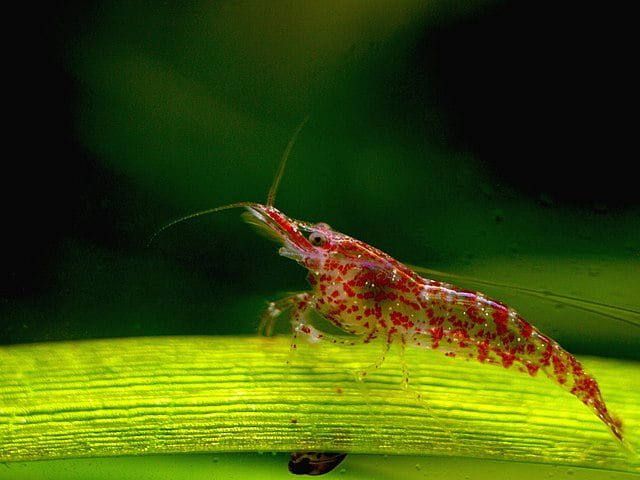
Consumers are becoming increasingly demanding. Not only do we seek nutritious foods, but we also crave taste, texture, and freshness. This is especially true in the case of aquatic products such as shrimp, prawns, and freshwater crabs. These culinary delights have become a cultural phenomenon, appreciated for their freshness, tenderness, and vibrant colors. But what exactly makes these creatures so delicious? Science holds the key!
Researchers from the Key Laboratory of Freshwater Aquatic Genetic Resources, Yancheng Institute of Technology, Jiangsu Academy of Agricultural Sciences, Freshwater Fisheries Research Institute of Jiangsu Province, and Huazhong Agricultural University comparatively analyzed the morphometric parameters, nutritional composition, textural properties, and physical and chemical indices of the muscle of seven commercially important crustacean species: freshwater crayfish (Procambarus clarkii), giant freshwater prawn (Macrobrachium rosenbergii), Pacific white shrimp (Litopenaeus vannamei), black tiger shrimp (Penaeus monodon), kuruma prawn (Penaeus japonicus), freshwater shrimp (Macrobranchium nipponense), and Chinese marine shrimp (Penaeus chinensis).
Feeding: the impact of diet
Research has shown that modifying the diet of aquatic animals can significantly affect muscle quality. Adding specific nutrients and additives can influence:
- Nutrient and amino acid content: Tailoring feed can enhance essential protein components.
- Fatty acid profile: Healthy fats like omega-3s can be boosted through strategic feeding.
For example, studies show that adding optimal protein to carp feed improves its taste by increasing firmness and enhancing desirable taste compounds.
Muscles matter: unveiling the power of proteins
Muscle quality is a complex measure that encompasses both nutritional value and taste. Scientists analyze various factors to assess this quality, including:
- Nutrient content: Proteins, fats, amino acids, and fatty acids play significant roles.
- Textural properties: How the meat feels in the mouth (think firmness, chewiness).
- Physicochemical properties: This includes factors like color, water retention, and acidity.
According to the study, the seven crustacean species feature high protein content and low levels of fat. This makes them a perfect choice for those seeking lean protein sources for muscle development and maintenance.
Here’s a breakdown of some key findings:
- Pacific white shrimp: emerged as the protein champion, containing the highest amount of crude protein compared to others.
- Freshwater crayfish: While it has lower overall meat content, freshwater crayfish takes the crown for the highest threonine (Thr) content, an essential amino acid important for immune function and growth.
- Freshwater prawns: Champions in methionine (Met) and lysine (Lys), crucial essential amino acids for protein synthesis and tissue repair.
Fatty acid profile
Crustaceans offer a healthy dose of fats, including essential unsaturated fatty acids (UFA) and beneficial omega-3 and omega-6 fatty acids. Here’s a glimpse into the fatty acid composition:
Stay Always Informed
Join our communities to instantly receive the most important news, reports, and analysis from the aquaculture industry.
- Freshwater prawns and Pacific white shrimp: Higher content of C18:2n-6 (linoleic acid, LA), an essential omega-6 fatty acid linked to heart health.
- Freshwater crayfish: King of monounsaturated fatty acids (MUFA) and C18:3n-3 (linolenic acid, LNA), another essential omega-3 fatty acid with anti-inflammatory properties.
- Freshwater prawns: Topped the charts in polyunsaturated fatty acids (PUFA), crucial for brain function and development.
Texture: the sensory experience
The study also explored the textural properties of these crustaceans. Pacific white shrimp emerged as the winner in terms of hardness, cohesiveness, gumminess, and chewiness, translating into a satisfying bite.
Color: Visual appeal matters too!
The vibrant colors of these crustaceans are not just aesthetically pleasing. They are often related to pigments in their food source. By incorporating specific pigments like astaxanthin into shrimp feed, researchers can enhance the intensity of shrimp meat color.
For those who appreciate the visual pleasures of food, the study revealed interesting color variations. Freshwater crayfish, black tiger shrimp, and Chinese marine shrimp showed significantly more intense reddening compared to other species.
Keeping it juicy: understanding cooking loss
The study also analyzed drip loss and cooking loss, which can affect the juiciness of cooked crustaceans. Freshwater prawns had the highest drip and cooking losses, while black tiger shrimp and Chinese marine shrimp had the lowest cooking loss rates.
The verdict
This research confirms that the tail muscle of these seven crustacean species is a treasure trove of essential nutrients. They are:
- Rich in proteins, essential amino acids, and unsaturated fatty acids.
- Low in fat, making them a heart-healthy choice.
The study highlights three crustacean champions:
- Pacific white shrimp: Highest protein, crude lipid, and crude ash content.
- Freshwater prawns: Champions in methionine, lysine, and PUFA content.
- Freshwater crayfish: Leader in threonine content and boasts the highest levels of MUFA and LNA.
So, the next time you’re looking for a delicious and nutritious seafood option, consider these crustacean choices! With their diverse flavor profiles, impressive nutritional content, and variety of textures, they offer something for everyone.
The study was funded by the National Natural Science Foundation of China, the Natural Science Foundation of Shanghai, and the Jiangsu Agricultural Industry Technology System (JATS).
Reference (open access)
Yang, Z., Jiang, Q., Zhang, W., Xia, S., Tian, H., Liu, F., Yang, W., Yu, Y., Wu, Y., Zhu, Y., Xu, Z., Gu, Z., Wang, A., & Chen, A. (2024). Comparison of Morphometric Parameters, Nutritional Composition, and Textural Properties of Seven Crustaceans Species. Fishes, 9(4), 141. https://doi.org/10.3390/fishes9040141
Editor at the digital magazine AquaHoy. He holds a degree in Aquaculture Biology from the National University of Santa (UNS) and a Master’s degree in Science and Innovation Management from the Polytechnic University of Valencia, with postgraduate diplomas in Business Innovation and Innovation Management. He possesses extensive experience in the aquaculture and fisheries sector, having led the Fisheries Innovation Unit of the National Program for Innovation in Fisheries and Aquaculture (PNIPA). He has served as a senior consultant in technology watch, an innovation project formulator and advisor, and a lecturer at UNS. He is a member of the Peruvian College of Biologists and was recognized by the World Aquaculture Society (WAS) in 2016 for his contribution to aquaculture.




